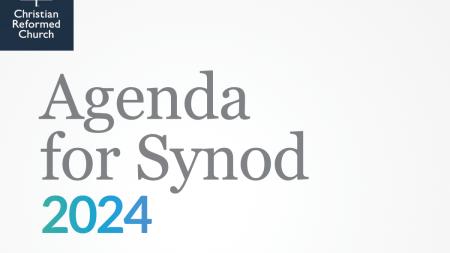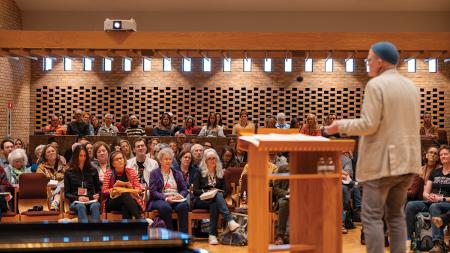Texas Pastors Talk Togetherness

The challenges Texas Christian Reformed Church congregations face are different than perhaps anywhere else within the denomination’s North American borders, forcing pastors there to take a fresh approach to how they reach out to their congregations and communities.
Not only is Texas almost prohibitively large geographically, the borders that have kept the CRC churches in Texas separate have been daunting -- culture, language, church closings and separation into four different classes.
But earlier this month, pastors and their spouses from around Texas gathered for a first-of-its-kind conference that helped to bridge the barriers that have separated them. It was a conference that was many years in the making, said Jerry Holleman, regional leader for Christian Reformed Home Missions.
With some 15 churches, the denomination has remained active in ministering to people across Texas’ sprawling geographic region.
Although they are spread out, the churches have shared some significant similarities.
The majority of CRC congregations around Texas are located in urban areas, where pastors have learned to deal with big-city issues such as poverty, diversity and residents that live life feeling minimalized within their communities.
These pastors have come to realize the importance of reaching out to a congregational population that blends people of different races and ethnic groups together.
It wasn’t always this way, though.
According to one Texas pastor, CRC congregations located in Texas have sometimes been guilty of creating the wrong impression about the denomination’s mission.
“(Churches) kind of said, ‘This is who we are and you have to be like us,’” said Rev. Mark Hilbelink, the lead pastor at Sunrise Community Church in Austin. “In the last 10 years, it’s been a lot more about us learning about them.”
The pastor’s conference was supported by grants from Sustaining Pastoral Excellence, the establishment of the Texas Fund (sustainable church planting fund) and camaraderie built at the 2012 CRC Prayer Summit, which was held in the Los Angeles, Calif., area in April.
By working together, said Hilbelink, pastors around the state are seeing their efforts begin to pay off. The CRC has become culturally relevant by planting churches for Hispanic and Korean members in a landscape heavily dominated by Baptist congregations.
“We’ve had to reflect our culture and it’s a tough balance to walk,” Hilbelink said. “But we really value indigenous leadership and raising up leaders and raising up the next generation.”
Church planting was a major emphasis at the recent pastor’s conference.
Also, pastors committed themselves to breaking down racial, classical and language barriers that hindered CRC congregations in the past, moving toward making the church continually more meaningful to people around the state.
“Even though our churches all may look very different from each other, the real miracle is this mixture of Hispanics, blacks, Koreans and (Caucasians),” Hilbelink said. “Not only are we meeting together, but we’re working together, too.
Besides hearing speakers and discussing issues, the pastors and their spouses had a chance to spend time in reflection and prayer as a way to refresh them before they returned to their communities.
Conferees had chance as well to learn “about how to build strong marriages while serving in ministry” and ways in which the various ministries in Texas can “build cooperation across cultural and classical lines” for the good of the state, said Hilblelink.


